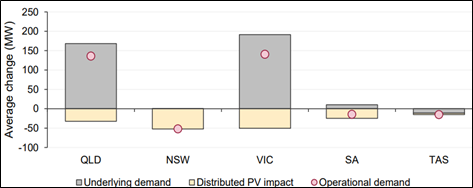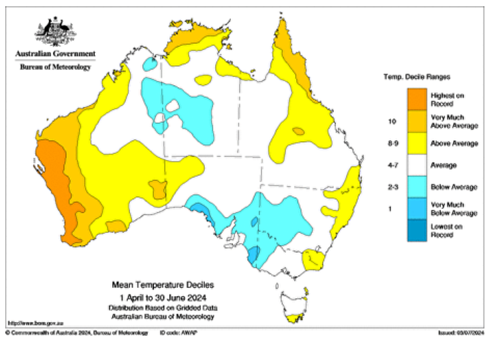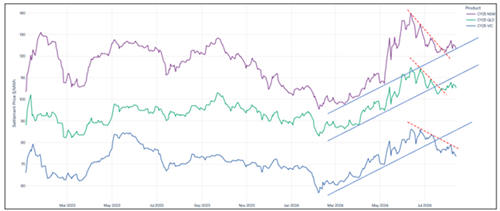Energy market update: Navigating the winter energy shift
The Australian Energy Market Operator (AEMO) has just released its Quarterly Energy Dynamics Report for Q2 2024, and it's packed with insights that could affect your energy strategy.

The Australian Energy Market Operator (AEMO) has just released its Quarterly Energy Dynamics Report for Q2 2024, and it's packed with insights that could affect your energy strategy. The key takeaway? Cold winter weather and a significant drop in wind generation have combined to push wholesale electricity prices higher. With wind speeds lower and rainfall below average, the energy generation mix had to adapt, impacting prices and supply.
Here’s a breakdown of what happened and what it means for your business:
Winter’s Impact on the Energy Mix: What Changed?
This winter saw record electricity demand levels across the National Electricity Market (NEM), driven by colder-than-usual temperatures. AEMO’s report highlights that winter heating demand has surpassed the summer cooling load with the ongoing shift towards electrification.
But demand wasn’t the only story—supply conditions also shifted. Wind generation dropped by 20%, and hydroelectric output decreased by 18% compared to last year's quarter.
This drop in renewable generation meant gas and coal had to step in to meet demand. Gas-fired generation increased by 16%, while coal-fired generation rose by 7%, with Queensland and Victoria contributing the most significant increases in demand across the NEM.
Here’s how demand changed by region from Q2 2023 to Q2 2024:
Source: AEMO Quarterly Energy Dynamics Q2 2024, July 2024.
Temperature Trends: North vs. South
The report also shows a regional split in temperature trends. While northern NEM regions experienced warmer-than-average temperatures, the southern regions faced significantly colder conditions, increasing heating demand. This regional variation added complexity to managing the energy supply across the market.
Market Prices Post-Q2 2024: What’s the Current Trend?
As we moved into July and August, the situation started to stabilise. The colder weather eased off, and wind generation began to recover, helping to rebalance electricity supply and demand. This shift has led to a moderation in wholesale prices across the NEM.
However, the earlier price spikes, particularly during May and June, have left their mark. During May, an outage at Vales Point took 660MW of baseload generation out of the market, pushing prices sharply higher. Cold weather and reduced wind generation kept prices high until mid-June. Since June, prices have dropped from recent peaks:
- NSW: Wholesale prices for 2025 contracts dropped by 12.9% since their peak on June 12th
- VIC: Prices decreased by 12.7% from their high on June 25th
- QLD: A 10.7% drop since June 12th
Electricity Prices: Calendar Year 2025 Contract Price
What This Means for the Retail Market
For businesses in Victoria, the trend shows a clear downward shift in wholesale prices for Calendar Year 2025 contracts. If the trend continues, this could present an opportunity to lock in lower prices. In contrast, while NSW has seen a price dip, the longer-term uptrend hasn’t fully reversed.
The big question now is whether this downtrend will hold. The energy market is unpredictable, and weather events or supply disruptions could increase prices. As a business, you’ll need to assess your risk tolerance and decide whether to lock in a fixed-price electricity agreement now or wait to see how the market evolves.
Stay Informed
To keep up with the latest energy market developments, follow us on LinkedIn for timely updates and insights.

Optimise your revenues
Our SmartestEnergy team of experts is here to support your green energy targets with realistic renewable energy solutions. Contact our team today to discover how SmartestEnergy can help and empower you to make smarter decisions for your business.


